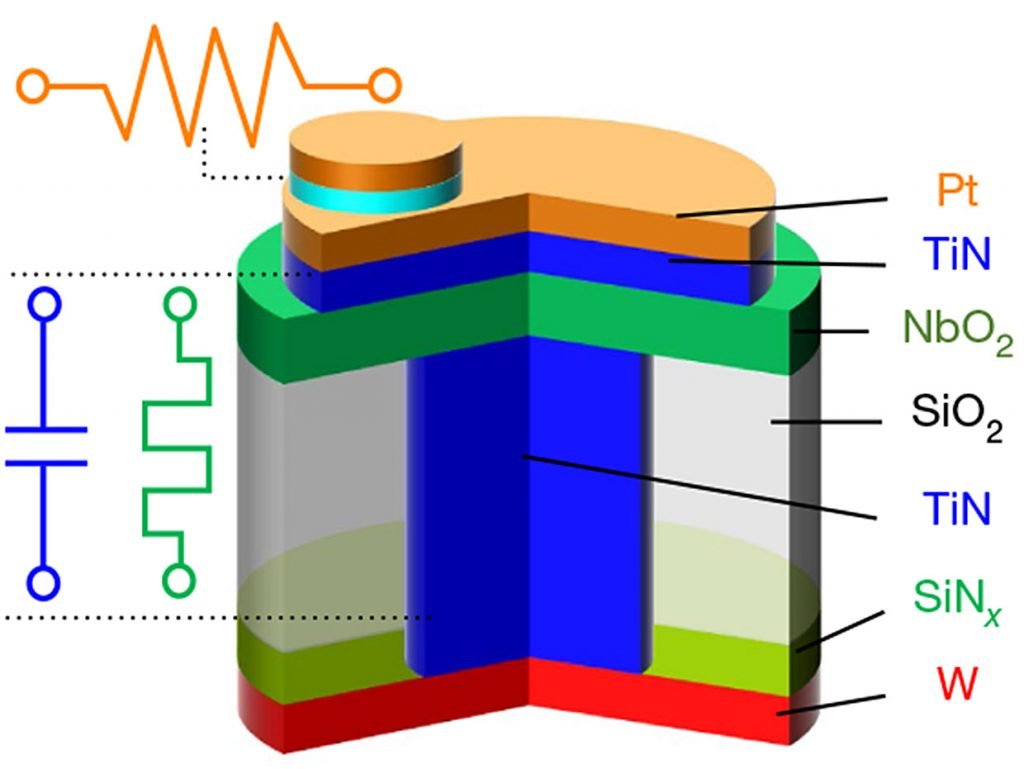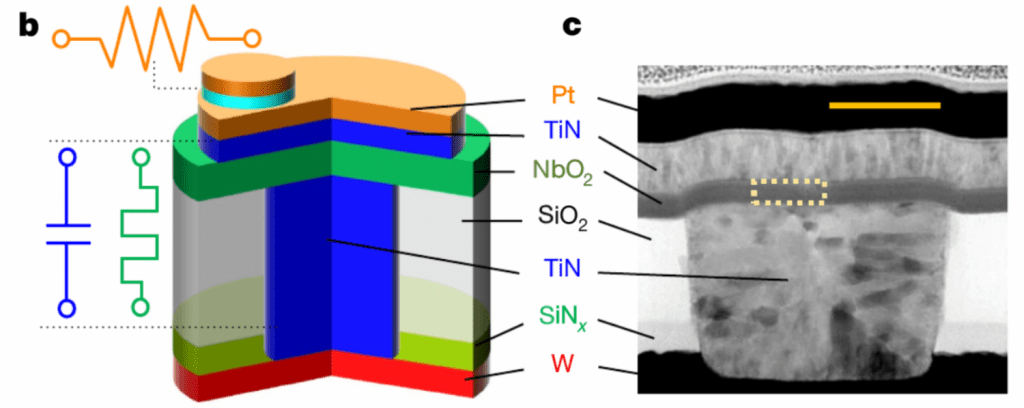Was created the first electronic component which alone behaves like a neuron.
Source: IEEE Spectrum
One thing that’s kept engineers from copying the brain’s power efficiency and quirky computational skill is the lack of an electronic device that can, all on its own, act like a neuron. It would take a special kind of device to do that, one whose behavior is more complex than any yet created.
Suhas Kumar of Hewlett Packard Laboratories, R. Stanley Williams now at Texas A&M, and the late Stanford student Ziwen Wang have invented a device that meets those requirements. On its own, using a simple DC voltage as the input, the device outputs not just simple spikes, as some other devices can manage, but the whole array of neural activity—bursts of spikes, self-sustained oscillations, and other stuff that goes on in your brain. They described the device last week in Nature.
It combines resistance, capacitance, and what’s called a Mott memristor all in the same device. Memristors are devices that hold a memory, in the form of resistance, of the current that has flowed through them. Mott memristors have an added ability in that they can also reflect a temperature-driven change in resistance. Materials in a Mott transition go between insulating and conducting according to their temperature. It’s a property seen since the 1960s, but only recently explored in nanoscale devices.
With this property, you can build sensors for control systems.

The transition happens in a nanoscale sliver of niobium oxide in the memristor. Here when a DC voltage is applied, the NbO2 heats up slightly, causing it to transition from insulating to conducting. Once that switch happens, the charge built up in the capacitance pours through. Then the device cools just enough to trigger the transition back to insulating. The result is a spike of current that resembles a neuron’s action potential.
They tested the device first by building spiking versions of Boolean logic gates—NAND and NOR, and then by building a small analog optimization circuit.
If this component is marketed and mass-produced, could build IA systems and neural networks closer to human capacity. The thumbnail image is a photo of new component. I will write soon a post about memristors.




